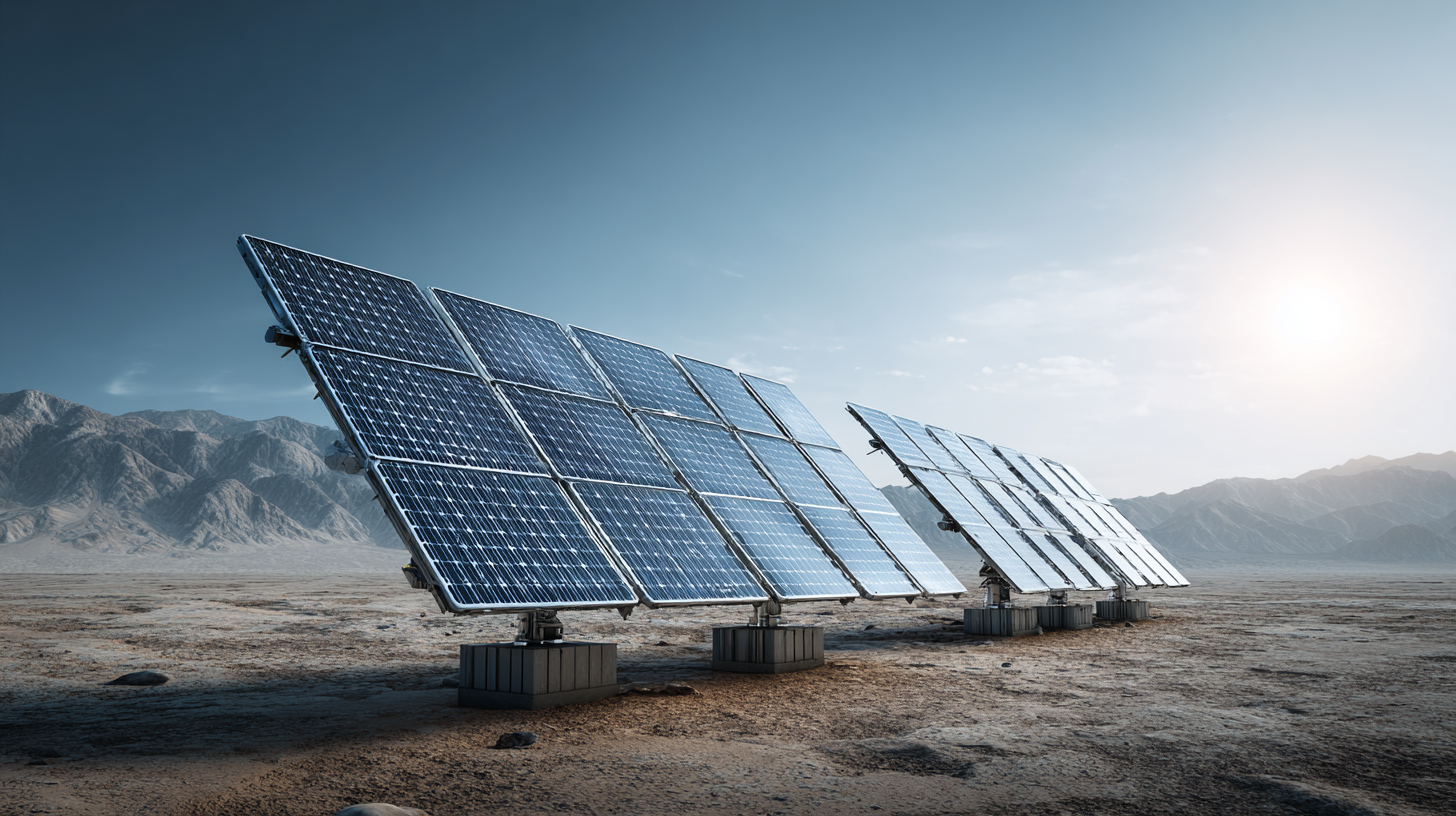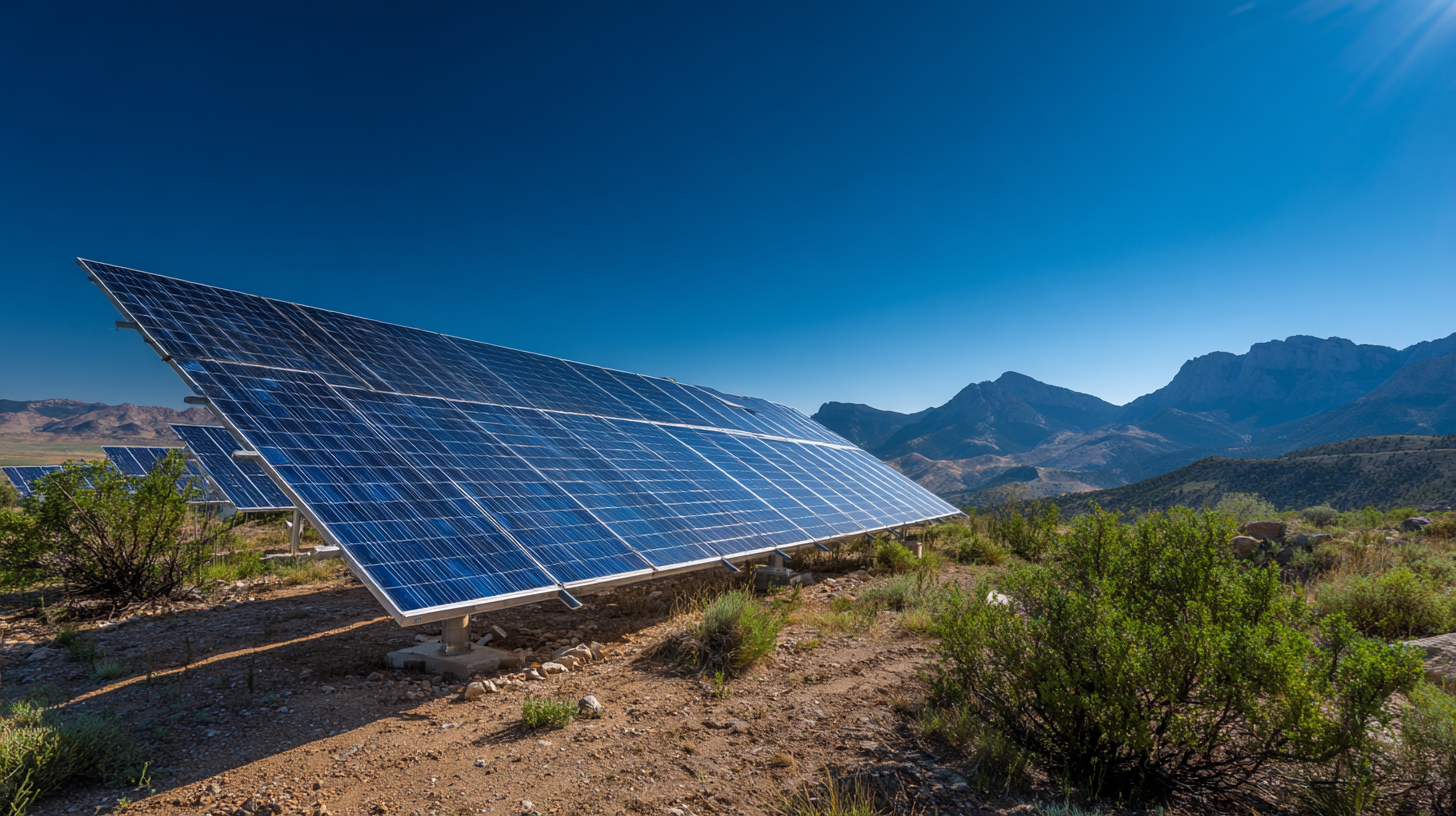Emerging Trends in Solar Technology Innovations for the Best Solar Systems by 2025
The solar energy industry is on the brink of transformative advancements, with projections indicating that the global solar market is expected to reach $223 billion by 2026, growing at a compound annual growth rate (CAGR) of 20.5% from 2021. As we look towards 2025, emerging trends in solar technology are set to redefine the landscape of Solar Systems, making them more efficient, cost-effective, and accessible than ever before. Innovations such as bifacial solar panels, energy storage integration, and advancements in photovoltaic materials are just a few examples of how technology is evolving to meet the increasing demand for renewable energy solutions. According to the International Energy Agency (IEA), solar power is anticipated to become the largest source of electricity globally by 2025, underscoring the critical need for consumers to stay informed about these trends in order to make the best choices for their solar energy needs.

Innovative Solar Cell Materials Revolutionizing Efficiency by 2025
As the world shifts towards sustainable energy sources, innovative solar cell materials are set to revolutionize the efficiency of solar systems by 2025. Traditionally, silicon-based solar cells have dominated the market; however, research is paving the way for alternative materials that promise higher efficiency rates and reduced production costs. Perovskite solar cells, for instance, are gaining significant attention for their lightweight properties and the ability to convert sunlight into electricity more effectively than traditional cells. Their tunable bandgap allows for customization, ensuring that they can be optimized for various applications, from residential rooftops to large-scale solar farms.
In addition to perovskites, advancements in organic photovoltaic materials are also making waves in the industry. These materials offer flexibility and could enable solar cells to be integrated into building materials, such as windows and facades, without compromising aesthetics. As we approach 2025, the combination of these innovative materials with improvements in manufacturing processes is expected to create solar systems that are not only more efficient but also more accessible to a broader market. This evolution in solar technology may ultimately lead to a more sustainable and energy-efficient future, driving the global transition towards renewable energy sources.
Advancements in Solar Panel Design for Enhanced Energy Capture
The solar industry is undergoing significant innovations, particularly in solar panel design that promise to enhance energy capture efficiency by 2025. With advancements in materials such as perovskite and bifacial panels, energy conversion rates are skyrocketing. According to a report by the International Renewable Energy Agency (IRENA), the efficiency of solar panels is expected to reach an impressive 30% for commercially available products within the next few years, driven by these cutting-edge designs.
Moreover, the integration of artificial intelligence (AI) in solar technology is revolutionizing the way panels are designed and implemented. AI algorithms can optimize the positioning and orientation of solar panels, ensuring maximum exposure to sunlight throughout the day. A study published in the journal "Nature Energy" highlighted that AI-driven systems could improve energy yields by up to 20%. As these advancements converge, we can expect solar systems to not only be more efficient but also more accessible, paving the way for a significant increase in solar adoption globally by 2025.

Integrating Smart Technology for Optimized Solar System Performance
As we look toward 2025, the integration of smart technology into solar systems is set to revolutionize energy production and consumption. Smart solar systems utilize advanced algorithms and artificial intelligence to analyze real-time data, optimizing performance and efficiency. This technology enables homeowners and businesses to monitor their energy generation and consumption patterns closely, maximizing their savings and reducing waste. By leveraging interconnected devices and sensors, smart technology ensures that solar systems operate at peak capacity, adjusting to changing weather conditions and energy demands automatically.
Moreover, the incorporation of smart grids with solar technology allows for better energy distribution and management. This not only enhances system reliability but also opens up opportunities for energy trading, where surplus energy generated can be sold back to the grid. By 2025, we can expect an increase in platforms that facilitate user engagement in energy management, enabling consumers to make informed decisions about their energy usage. The synergy between solar technology and smart systems promises a future where renewable energy is more accessible, efficient, and user-friendly, paving the way for a sustainable energy landscape.
Emerging Trends in Solar Technology Innovations (2020-2025)
This chart illustrates the projected growth in adoption rates of different solar technology innovations from 2020 to 2025. The data showcases advancements in smart technology, integrated energy systems, and efficiency improvements in solar panels.
The Role of Energy Storage Solutions in Future Solar Systems
The future of solar systems by 2025 holds immense promise, particularly with the integration of advanced energy storage solutions. As the global demand for renewable energy surges, reports indicate that the energy storage market is projected to grow significantly, reaching an estimated capacity of 1,095 GWh by 2025. This transformative shift is primarily driven by the need to balance intermittent solar energy generation with consistent power supply. Energy storage systems, including lithium-ion batteries and emerging technologies like solid-state batteries, offer a viable solution to this challenge, enhancing the reliability and efficiency of solar technologies.
Furthermore, recent studies highlight that the adoption of energy storage can boost the overall economic viability of solar installations. With the cost of lithium-ion batteries dropping by over 80% since 2010, their integration into solar systems has become more accessible for consumers and businesses alike. By 2025, it is estimated that 80% of new solar installations will feature some form of energy storage, facilitating greater energy independence and resilience. This synergy between solar technology and energy storage not only paves the way for a greener future but also ushers in a new era of smart energy systems that can adapt to the evolving needs of society.
Policy and Market Trends Driving Solar Technology Adoption in 2025
The solar energy landscape is experiencing significant shifts, largely driven by evolving policies and market trends. According to the International Renewable Energy Agency (IRENA), global solar capacity is expected to triple by 2025, reaching over 4,800 GW. This surge is largely influenced by government incentives and stringent emissions regulations, which encourage both residential and commercial sectors to adopt solar technologies. For instance, the Biden administration's commitment to achieving a carbon-free electricity sector by 2035 has accelerated investment into renewable energy solutions, creating a robust market for solar systems.

On the market front, technology innovations such as bifacial solar panels and energy storage solutions are enhancing the efficiency and appeal of solar systems. A report by the Solar Energy Industries Association (SEIA) indicates that the U.S. solar market alone could see a 20% compound annual growth rate over the next few years, attributing much of this growth to advancements in solar PV technology and the incorporation of smart grid capabilities. With consumer awareness about sustainability rising and financing options becoming more accessible, the fusion of policy support and technological advancements is set to steer the solar market towards unprecedented growth by 2025.
Contact Details
Address:
Solar Pump Solutions,
Borrisokane, Co. Tipperary, Ireland.
